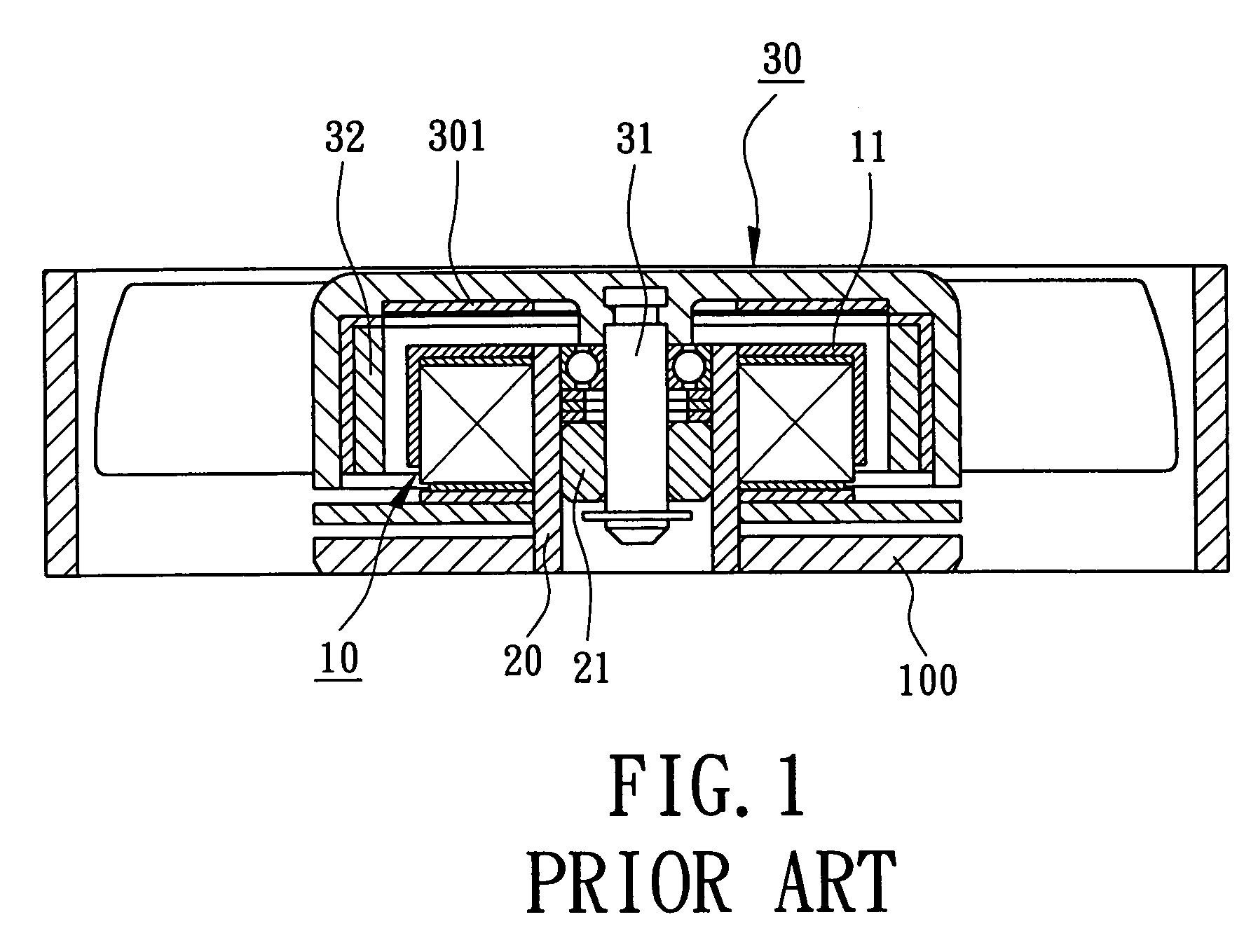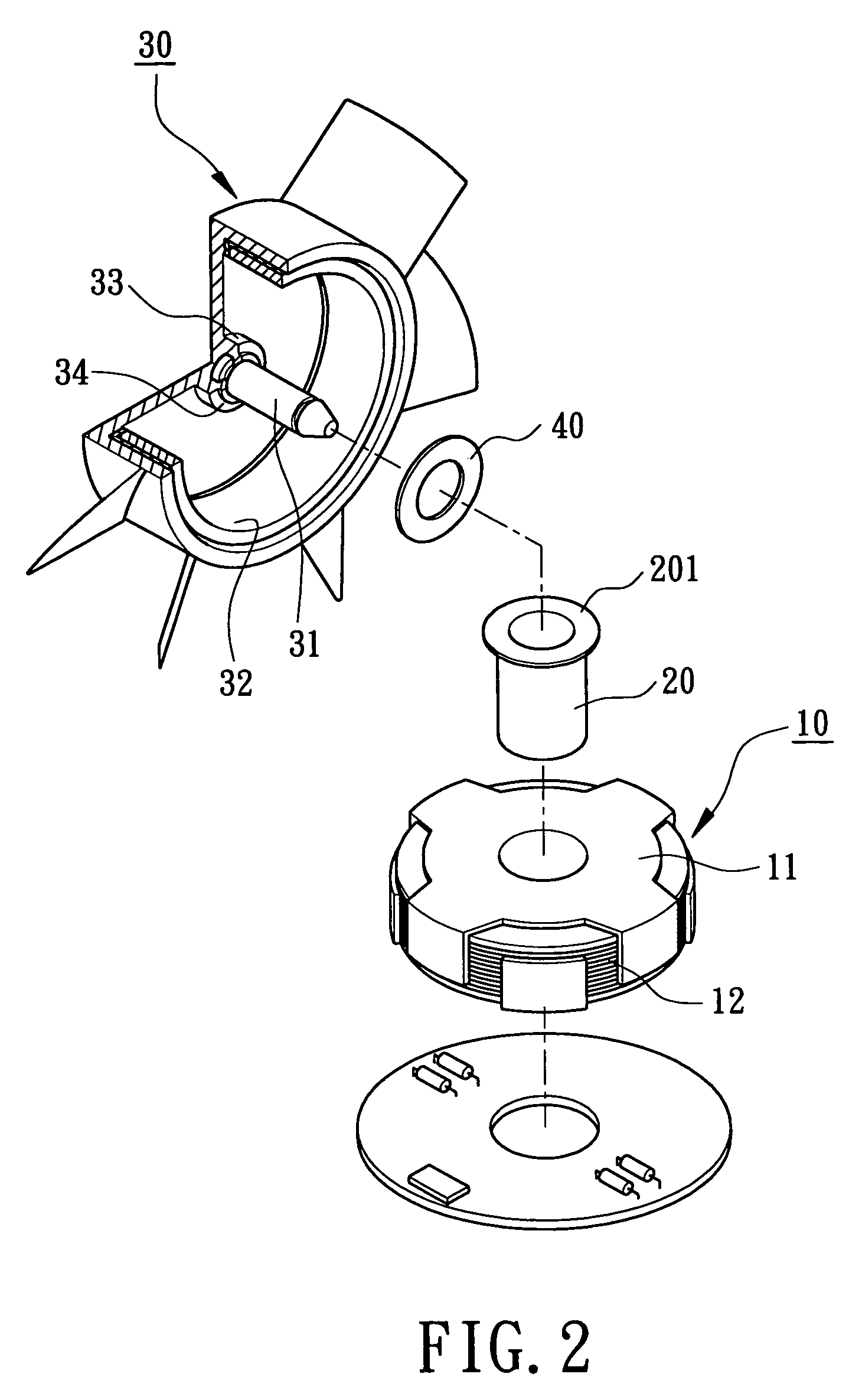Prestressing structure for rotationally balancing a motor
a technology of rotating balance and stabilizer, which is applied in the direction of rotating magnets, mechanical energy handling, synchronous machines with stationary armatures, etc., can solve the problems of reducing the excitation efficiency of pole plates, reducing the speed of motors, and abrasion of bearing members
- Summary
- Abstract
- Description
- Claims
- Application Information
AI Technical Summary
Benefits of technology
Problems solved by technology
Method used
Image
Examples
Embodiment Construction
[0028]Referring to FIGS. 2 through 9, reference numerals of the first through sixth embodiments of the present invention have applied the identical numerals of the conventional motor members, as shown in FIG. 1. The construction of motor members in accordance with embodiments of the present invention have similar configuration and same function as that of the conventional motor members and detailed descriptions may be omitted.
[0029]Referring to FIGS. 2 through 4, a prestressing structure for rotationally balancing a motor in accordance with a first embodiment of the present invention includes a motor stator 10, a magnetically conductive member 201, a motor rotor 30 and a balancing magnet 40.
[0030]Referring again to FIGS. 2 through 4, construction of the motor stator 10 shall be described in detail. The motor stator 10 consists of at least one pole plate 11 and at least one coil 12. The pole plate 11 of the motor stator 10 may be alternatively magnetized when a current and a counter ...
PUM
 Login to View More
Login to View More Abstract
Description
Claims
Application Information
 Login to View More
Login to View More - R&D
- Intellectual Property
- Life Sciences
- Materials
- Tech Scout
- Unparalleled Data Quality
- Higher Quality Content
- 60% Fewer Hallucinations
Browse by: Latest US Patents, China's latest patents, Technical Efficacy Thesaurus, Application Domain, Technology Topic, Popular Technical Reports.
© 2025 PatSnap. All rights reserved.Legal|Privacy policy|Modern Slavery Act Transparency Statement|Sitemap|About US| Contact US: help@patsnap.com



